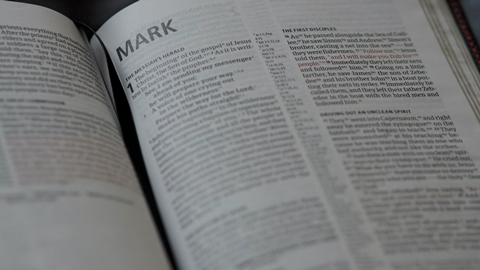Philosopher and author of Testimonies to the Truth: Why You Can Trust the Gospels, Lydia McGrew, looks at some key elements that point to the genuineness of eye witness testimony within the Gospel narratives
I’m a big fan of whodunits, and Agatha Christie is one of my favourite mystery authors. I believe that I’ve now read all of her mysteries multiple times; I almost have some passages memorized. In one story (we’ll leave the title unstated to try to avoid spoilers) the murderer poses as a witness. He insists that he saw something significant on the night of the murder, and he keeps pestering the police with his statements. The detective’s suspicions are aroused by the fact that this ‘witness’ is so eager for attention. He even describes something in far greater detail than would have been possible to see on the night in question, due to fog, and he insists on trying to get the police to arrest another person for the crime even though that person has an airtight alibi. In other words, because he knows that his story is false, he can’t just be casual. He can’t just let the truth speak for itself.
Read more:
Can the Gospels be trusted? - The texture of testimony
Are there contradictions in the Bible?
Is John’s Gospel historically accurate?
Controversies in Jesus studies
In describing the memoir view of the Gospels in a previous post, I mentioned casualness as part of the texture of testimony. Older authors referred to this quality as artlessness. What is this property of casualness and why is it important? Imagine a case where police are taking statements from people who claim to have witnessed a robbery at a store. One person describes the robber’s clothing. After mentioning the colour of his jacket, his trousers and his shoe style, he then says: “And I noticed that one of his shoes was untied.” A second alleged witness describes the robber’s actions and says: “And when he ran out of the store, he tripped and almost fell.”
These two statements fit together in what is known as an undesigned coincidence. An untied shoe could well explain why someone running away would trip and almost fall. But the person who mentions the untied shoe doesn’t mention the tripping, and the person who mentions the tripping doesn’t mention the untied shoe. These two witness statements explain each other, but they do so with apparent artlessness.
The connection appears to happen not because the witnesses got together and colluded on their stories, and not because they were making things up and just happened to say things that fit together. The parts of their testimony fit together because they both are telling the truth, but each one mentions only part of the truth. Reality itself fits together, and different parts of reality explain each other.
Casual connection
The quality of apparent casualness is what lets us conclude reasonably that the connection between the witnesses’ statements was not deliberately designed by them. If we think of casualness as not trying to produce a certain impression, then each statement exhibits casualness in the sense that neither witness appears to be worrying about what impression he is creating on the investigators nor trying to fit his statement together with that of the other witness.
Is it possible that one alleged witness not only overheard the other testimony but also was extremely subtle and crafty? “Hmm, I notice that that other person mentioned that the robber had an untied shoe. I’ll make up a claim that he tripped on his way out. If the police notice that those two things fit together, that will make me look like I’m honest and like I was there. Really I am just making this stuff up to get in on all the excitement and attention.” As in most cases of non-deductive reasoning, a lot of things are possible, including that theory. But that isn’t the way to bet.
Due to the apparent casualness of the connection—the fact that the two witnesses neither make such a connection nor show evidence that they know about the other fact—it would be entirely possible for the hearers to overlook it. A person who is inserting himself into a situation and inventing things is far less likely than a truth teller to leave it to chance whether he receives full credit for his interesting revelations.
Get access to exclusive bonus content & updates: register & sign up to the Premier Unbelievable? newsletter!
Undesigned coincidences in the Gospels
We find these sorts of undesigned coincidences in the Gospels, and the apparent casualness of the connections is an important part of their power. Luke reports that on the night when Jesus ate his Last Supper with his disciples, he rebuked them for quarrelling over who would be the greatest in Jesus’ promised kingdom (Luke 22:24-27). Jesus asks them who is greater, the one who reclines at the meal (the normal posture for eating at the time) or the one who serves.
Obviously, in one sense of ‘greater’, the proper answer is that the one who reclines and eats is greater—he has higher social standing. But, Jesus points out: “I am among you as the one who serves.” What does this mean? Just a few verses before, Luke has said that Jesus was reclining with his disciples at the meal (Luke 22:14). So what does he mean by contrasting his own role with the role of one who reclines at the table? How is he among them as the one who serves?
The answer is found in John’s Gospel. John doesn’t mention at all that the disciples were quarrelling that night. But he does mention that Jesus got down, took off his outer garments and washed their feet (John 13:1-10). Washing the feet of guests was a job that was only performed by slaves. It was a shocking thing to the disciples that Jesus washed their feet. So shocking, in fact, that Peter protested at it. In John’s Gospel, Jesus then proceeds to tell them that they should have the same servant-like attitude toward one another since he, their Lord and master, has washed their feet (John 13:12-17).
This fits perfectly with the report in Luke, while Jesus’ rebuke and his reference to himself as serving rather than reclining at the table, recorded in Luke, fits very well with the explanation found in John. The sequence of events is quite believable. First the quarrel, then Jesus’ silent, enacted rebuke of foot washing, then his verbal rebuke, in which he emphasizes that he, though in one sense the greatest of all, is among them as one who serves.
Both John and Luke are quite casual about this connection, and it isn’t even clear whether either of them is thinking, at the moment of writing that passage, of the other part of the coincidence. While it is not improbable that Luke had heard of Jesus’ foot washing, he takes no pains whatsoever to connect for his readers’ benefit the verbal rebuke or the reference to being one who serves with the foot washing. He is casual about it. Maybe he didn’t even think of how the two things fit together. By the same token, John may well have remembered the quarrel (assuming that he was indeed a disciple, he probably did), but he does not report either the quarrel itself or Jesus’ words, “I am among you as one who serves.”
Confirmation of truth
As in the case of the robber with the untied shoe, it’s possible that John or Luke invented his side of the story but tried to be extra subtle in not drawing the connection, hoping that his readers would notice it and give him extra credit for truthfulness, but that’s not the way to bet. Indeed, many of us who know the Gospels well have gone for decades without ever noticing these undesigned coincidences, even though we have all four Gospels in written form and can read passages in them any time we want to. The casualness of the connections is what makes them easy to miss while at the same time being an important part of their power to confirm truth, once they are noticed.
Once you start seeing the way that the memoir view of the Gospels explains the data, you can’t unsee it. It’s my hope to make these evidence for the Gospels’ truth available to as many people as possible.
Dr Lydia McGrew is a widely published analytic philosopher and author. She received her PhD in English from Vanderbilt University in 1995. She has published extensively in the theory of knowledge, specialising in formal epistemology and in its application to the evaluation of testimony and to the philosophy of religion. She defends the reliability of the Gospels and Acts in four books to date, most recently, Testimonies to the Truth: Why You Can Trust the Gospels.























